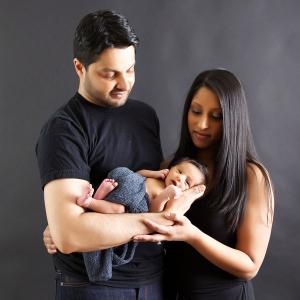
He has been called the world’s first stem cell baby. Zain Rajani was born three weeks ago in Canada after his parents opted for a new type of IVF marketed under the name Augment. The procedure is supposed to enhance the quality of a woman’s eggs by injecting them with mitochondria taken from her ovarian stem cells.
Some media reports say this is the breakthrough that will usher in the next big advance in IVF, but experts New Scientist spoke to were sceptical. Let’s weigh up the evidence.
So women have stem cells in their ovaries? Does this mean they can make new eggs? I thought women were born with all the eggs they were ever going to have.
That was the dogma until a few years ago, when a group at Massachusetts General Hospital in Boston discovered stem cells tucked away in the protective lining of the ovary that mature into fresh eggs. The finding suggested that new eggs are produced throughout life and was hailed as revealing that there is a limitless eggs for IVF treatments. It was suggested at the time that this could also allow older eggs to be rejuvenated.
The team that made the discovery, led by Jonathan Tilly, then partnered with OvaScience. It was this company that announced the birth of Zain on 7 May.
How did the stem cells help Zain’s mother conceive?
The idea is that the mitochondria – cellular energy generators – in young, primitive cells function much better than those in the mature eggs collected for IVF. Collecting these mitochondria and injecting them into the prospective mother’s mature eggs is supposed to improve their quality. In its press release, OvaScience says: “This treatment is designed to improve egg health by increasing the eggs’ energy levels for embryo development.”
It seems to have worked, at least in the Rajani case?
It’s hard to draw any conclusions from the information released so far. The OvaScience press release says that “initial positive experiences of pregnancies with the treatment have been reported”.
Time magazine reports that 36 women in four countries have tried the technique, and eight are currently pregnant. It also says that there have been no formal clinical trials of the procedure but that OvaScience are planning to carry out 1000 rounds of IVF around the world this year using Augment, partly to convince the US Food and Drug Administration to approve the treatment in the US.
Although the procedure appears to have worked for the Rajanis where traditional IVF failed, we don’t know for certain that Zain owes his existence to Augment. “The fact a baby has been born is one case, but you can’t prove that the technology they used is the one reason for this success,” says Adam Balen, a professor of reproductive medicine at Leeds Teaching Hospitals NHS Trust in the UK and chairman of the British Fertility Society.
When New Scientist contacted OvaScience for a response, they said: “The evidence is based on the mother’s medical history, including a prior IVF cycle failure which showed very poor embryo quality, as well as her diagnoses.
“There are other pregnancies in poor prognostic patients across all the clinics offering the treatment.”
What else do independent fertility researchers think?
Balen and others we contacted cited a lack of evidence that adding fresh mitochondria would help make old eggs youthful again. “The reason old eggs are less fertile is because they don’t have the integrity to go through cell division in an ordered way, which is why you get chromosome imbalances,” says Balen. “There’s no peer-reviewed evidence that mitochondria from immature eggs would correct this.”
“There’s a lack of evidence of efficacy, efficiency and safety,” says Alison Murdoch of Newcastle University, UK. “The problem in older women is the quality of the nuclear genome in their eggs, and adding more mitochondria will not help that problem,” she says. “Also, manipulation of the embryo at that very sensitive time could cause more problems for the nuclear genome, which is why safety data is critical.”
Has anything like this been done before?
Sort of. In 2001, Jacques Cohen at the Institute for Reproductive Medicine and Science at Saint Barnabas, in New Jersey, injected mitochondria from a donor egg into 30 eggs of infertile prospective mothers, a procedure known as ooplasmic transfer. The fact that this resulted in a handful of pregnancies is seen as supporting evidence for the Augment technique. “There are published clinical reports from multiple IVF clinics throughout the world which showed that using mitochondria from a younger woman’s donor egg significantly improved IVF success,” OvaScience told New Scientist. “More than 50 babies were born from this technique, and those children are now in their late teens and early 20s”.
In Cohen’s case, the research was halted because the babies carried extra mitochondria from the donor, leading to an outcry over them having three parents.
Three-parent babies? That sounds familiar.
Yes. Both ooplasmic transfer and Augment have some parallels with mitochondrial replacement therapy, the controversial new type of IVF recently approved by the UK government. Like ooplasmic transfer, this results in children carrying DNA from three people. It was approved because it prevents parents from passing on untreatable mitochondrial diseases to the child. Because the Augment technique uses mitochondria from the mother’s ovarian stem cells rather than a donor, there is no three-parent ethical quagmire to wade through.
source:NewSientist
